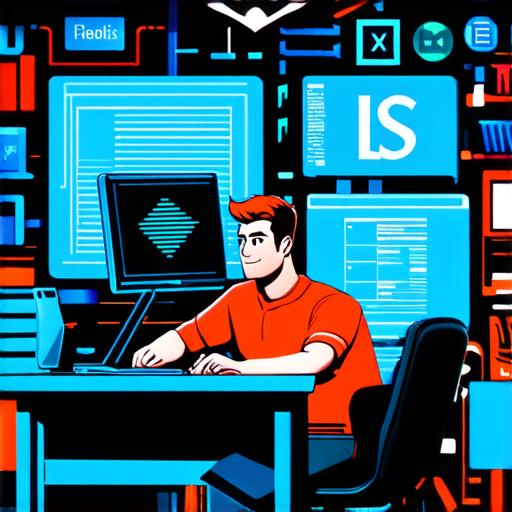In today’s world, software has become an indispensable part of our lives. It runs on our computers, phones, and even in our homes. As a software developer, you have the power to create programs that can change people’s lives for the better. But before you start writing code, it’s important to understand the primary types of software and their functions.
Operating Systems (OS)
An operating system is a type of software that manages computer hardware and software resources and provides common services for computer programs. It acts as an intermediary between the user and the computer hardware, allowing users to interact with the computer without having to understand its inner workings. Some examples of popular operating systems include Windows, macOS, and Linux.
Operating systems are critical to the functioning of a computer system. They provide a stable environment for programs to run on and manage resources such as memory, storage, and processing power. The choice of operating system can affect the performance, security, and compatibility of software applications.
Application Software
Application software is a type of software designed for end-users to perform specific tasks. It runs on top of the operating system and provides functionality such as word processors, spreadsheets, web browsers, and media players. Examples of application software include Microsoft Office, Adobe Creative Suite, and Google Chrome.
Application software is created with the user in mind and is designed to make tasks easier and more efficient. It can automate repetitive tasks and simplify complex operations, saving users time and effort. Application software is available for different operating systems and can be accessed through a web browser or installed on a computer’s hard drive.
Middleware Software
Middleware software is a type of software that acts as an intermediary between application software and the operating system. It provides communication and data transfer services, allowing different programs to work together seamlessly. Middleware software can be used to integrate systems from different vendors, enabling collaboration between organizations.
Middleware software is critical in today’s distributed computing environment, where applications are built using a combination of technologies and platforms. It ensures that data can be exchanged between systems efficiently, regardless of their location or language. Examples of middleware software include Java EE, .NET Framework, and Apache HTTP Server.

Database Software
Database software is a type of software used to store, organize, and manage data. It provides a structured way to store information and enables users to access and retrieve data quickly and efficiently. Some examples of popular database software include MySQL, Oracle Database, and Microsoft SQL Server.
Database software is critical in today’s data-driven world, where organizations rely heavily on information to make informed decisions. It allows users to manage complex data sets, perform queries and analysis, and store data securely. The choice of database software can affect the scalability, security, and performance of a system.
Mobile Software
Mobile software is a type of software designed specifically for mobile devices such as smartphones and tablets. It provides functionality such as gaming, social media, and productivity tools, enabling users to access these features on-the-go. Some examples of popular mobile software include WhatsApp, Instagram, and Microsoft Office Lens.
Mobile software is critical in today’s world, where people rely heavily on their mobile devices for communication, entertainment, and work. It allows users to access information and perform tasks from anywhere, at any time. Mobile software can be developed using different programming languages and platforms, including Android, iOS, and Windows Phone.
Desktop Software
Desktop software is a type of software designed for use on desktop computers. It provides functionality such as productivity tools, gaming, and multimedia players, enabling users to access these features from their desks. Some examples of popular desktop software include Microsoft Office, Photoshop, and Adobe Premiere Pro.
Desktop software is critical in today’s world, where people rely heavily on computers for work and entertainment. It allows users to access information and perform tasks from the comfort of their homes or offices. Desktop software can be developed using different programming languages and platforms, including Windows, macOS, and Linux.
Web Software
Web software is a type of software that runs on web browsers and can be accessed through the internet. It provides functionality such as social media, e-commerce, and online applications, enabling users to access these features from anywhere with an internet connection. Some examples of popular web software include Facebook, Amazon, and Gmail.
Web software is critical in today’s world, where people rely heavily on the internet for communication, commerce, and information. It allows users to access information and perform tasks from anywhere in the world. Web software can be developed using different programming languages and platforms, including HTML, CSS, JavaScript, and PHP.
Comparison of Software Types
Now that we have explored the primary types of software let’s compare them based on their features and functions.
